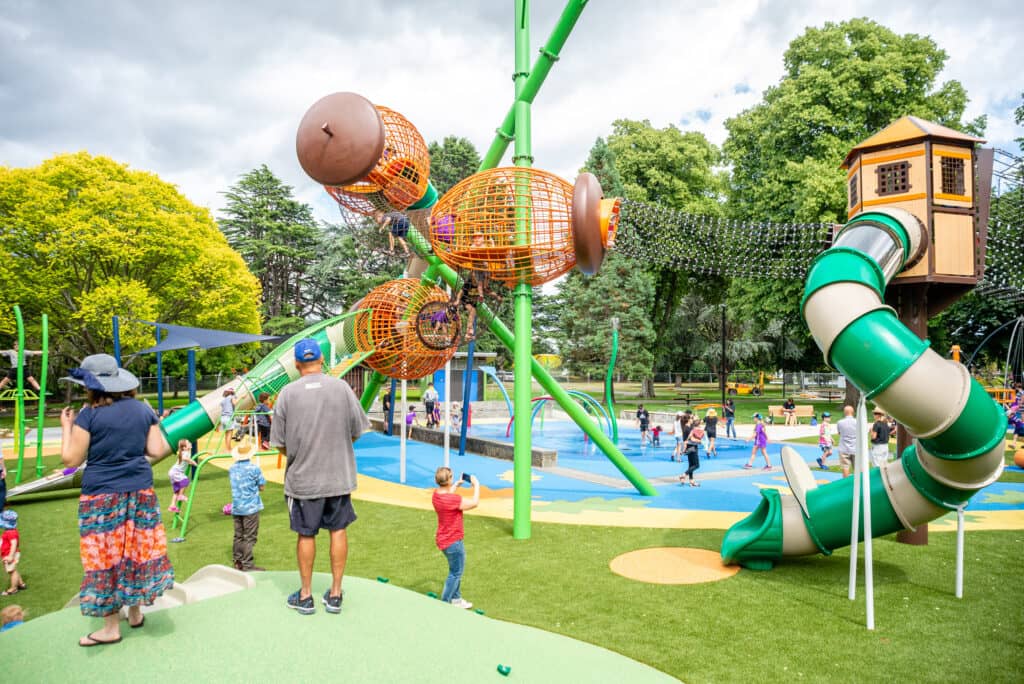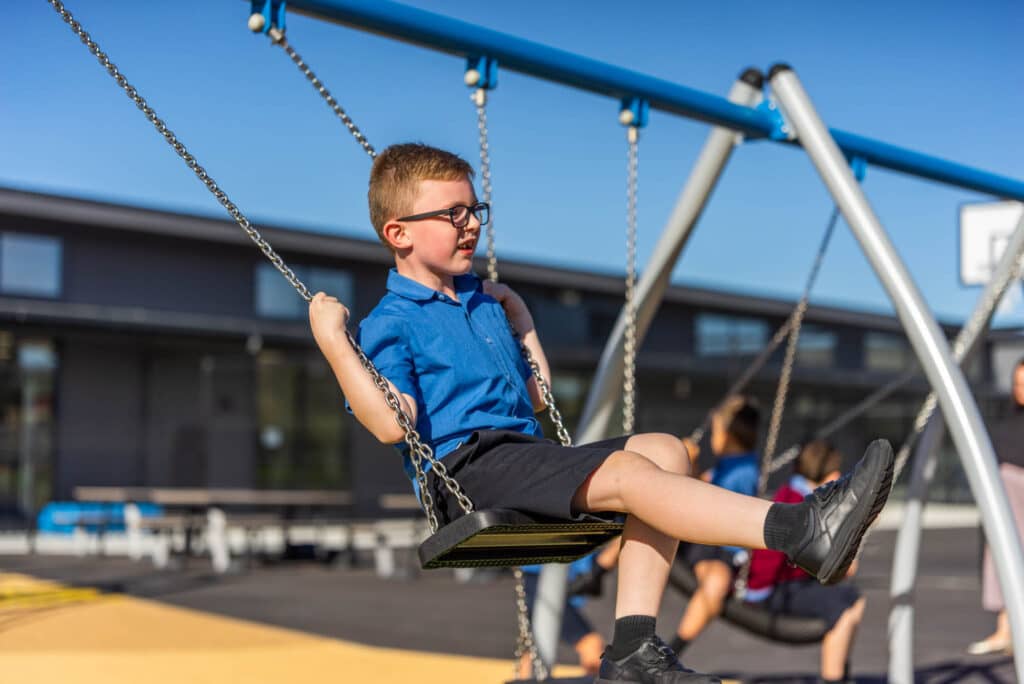In recent years, there has been a growing recognition of the importance of multigenerational playgrounds. These unique spaces are designed to unite people of all ages, fostering inclusivity, social connections, and a sense of community.
They offer a range of benefits, including promoting physical activity, improving cognitive development, enhancing emotional well-being, and much more. In this article, we will explore the various advantages of multigenerational playgrounds and delve into their design and features.
What are Multigenerational Playgrounds?
Multigenerational playgrounds are recreational spaces designed to accommodate individuals of all ages, from children and teenagers to adults and seniors.
Unlike traditional playgrounds primarily geared towards younger children, these spaces provide opportunities for people of different generations to interact and engage in play activities together.
Multigenerational playgrounds emerged as a response to the growing need for inclusive play spaces catering to the diverse needs and abilities of individuals across all age groups.
These playgrounds typically feature a variety of equipment and play structures suitable for people of different ages, allowing for intergenerational play and interaction.

Promoting Physical Activity and Exercise
One of the critical advantages of multigenerational playgrounds is their ability to promote physical activity and exercise among individuals of all ages.
Regular physical activity is crucial for maintaining good health and reducing the risk of various chronic conditions.
By providing age-appropriate equipment and play structures, these playgrounds encourage individuals to engage in active play, improving their strength, balance, coordination, and overall fitness.
Children can enjoy climbing structures, slides, swings, and interactive play panels, which help them develop gross motor skills and promote physical growth.
Teenagers and adults can participate in activities such as jogging tracks, sports courts, and fitness stations, allowing them to stay fit and active.
Seniors can benefit from low-impact exercises, such as walking paths with benches for resting, tai chi areas, and low-intensity resistance training equipment, supporting their mobility and overall well-being.
Fostering Social Connections and Relationships
Multigenerational playgrounds are important spaces for building and strengthening social connections and relationships across different age groups.
These spaces facilitate interaction, communication, and engagement between generations by bringing individuals together in a shared play environment.
Children can learn from older adults and develop social skills by playing and collaborating with peers and older individuals. Teenagers can engage in team sports and group activities, fostering a sense of camaraderie and friendship.
Adults can connect with other parents, caregivers, or individuals with similar interests, sharing experiences and building support networks.
Seniors can combat social isolation, as they have opportunities to interact with younger generations, share wisdom, and feel a sense of belonging within the community.
Enhancing Cognitive Development
Multigenerational playgrounds offer a range of play elements and activities that stimulate cognitive development in individuals of all ages.
Through play, children can engage in problem-solving, creativity, and imagination, essential for their cognitive growth.
They can explore sensory play elements, puzzles, and educational games, enhancing their cognitive abilities and critical thinking skills.
Teenagers and adults can also benefit from cognitive stimulation through games that require strategy, concentration, and quick thinking.
Interactive play panels and brain teasers encourage mental agility and cognitive flexibility. Seniors can engage in memory games, puzzles, and activities that promote cognitive function, helping them maintain mental sharpness and cognition.

Improving Emotional Well-being
In addition to the physical and cognitive benefits, multigenerational playgrounds also positively impact emotional well-being.
Play, in its various forms, has been linked to improved mood, reduced stress, increased self-esteem, and enhanced overall well-being.
For children, play provides an outlet for self-expression, emotional regulation, and social and emotional skills development.
Teenagers can experience stress relief and emotional support through team sports and group activities.
Adults can find a sense of stress reduction and relaxation through playful exercises or leisurely interactions. Seniors can combat loneliness and depression by engaging in meaningful play experiences and social interactions.
Design and Features of Multigenerational Playgrounds
Multigenerational playgrounds are designed carefully considering individuals’ diverse needs and abilities across different age groups. Some key design elements and features include:
- Inclusive and accessible: The playgrounds are designed for individuals of all abilities, ensuring everyone can participate and engage in play.
- Variety of play equipment: The playgrounds offer diverse play structures and equipment catering to different age groups and abilities. This includes swings, climbing structures, sports courts, musical play elements, interactive panels, and more.
- Seating and resting areas: The playgrounds provide seating and resting areas, such as benches, shade structures, and picnic tables, for individuals of all ages to take breaks or observe others playing.
- Safety measures: Safety is a top priority in multigenerational playgrounds. The design incorporates appropriate surfacing, handrails, and clear signage to ensure a safe play environment for everyone.
- Intergenerational spaces: The playgrounds are designed to encourage interaction and engagement between generations. This may include communal seating areas, picnic spots, or family-friendly zones.
Conclusion
Multigenerational playgrounds offer many benefits, creating inclusive and engaging spaces for individuals of all ages. By promoting physical activity, fostering social connections, enhancing cognitive development, and improving emotional well-being, these playgrounds contribute to communities’ overall health and well-being.
Their design and features prioritise inclusivity, accessibility, safety, and opportunities for intergenerational play.
As we continue to recognise the importance of intergenerational connections, developing multigenerational playgrounds is a significant step towards creating vibrant and cohesive communities.